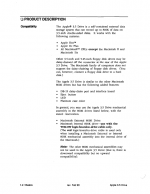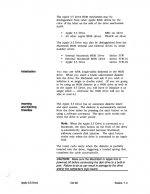I'm not stating what is being stated by Apple is or is not correct.
I am stating that by my experience and memory - point 1, point 2, point 3...
My experience and memory with the Apple 3.5in drive is that when you plug into a Mac, you blow it out. Whether or not you are blowing out this Daisy Chain board or other damage is done remains to be seen; I remember that tiny circuit board in the back of the Apple drive going bad after plugging it into a Mac and this goes back to the 1990s with the NYC Big Apple User's group (BAUG). Whether the damage done extends to the computer with its onboard chip going too remains to be seen as it depends on how long you keep it turned on.
Furthermore, this is the 4th or 5th thread posting on this forum of "My Apple IIgs 800K Drive is dead after plugging into a Mac!" And there are many many more on the web. Don't you see a pattern here?
Once - It's an accident.
Twice - It's a Coincidence.
Three Times - It's a Conspiracy.
Four Times? It's a sure thing.
Now, I've been reading up to catch up on this...
There are two so-called Apple II 3.5 in 800K drives - the longer produced UniDrive and the Apple 3.5in drive. The cases on both are almost identical. The problem as I see it happens on the UniDrive as there is a problem with that drive being plugged into a Mac.
So what drive was plugged into the Mac and got blown out? Don't tell me that its an Apple 3.5in 800K drive. Chances are it is a Unidrive that is being plugged in and getting blown out. Remember they almost look identical. I'm seeing this:
An Apple II user has this:
https://en.wikipedia.org/wiki/Macintosh_External_Disk_Drive#Apple_UniDisk_3.5
but reads this (the Apple Notes as well):
https://en.wikipedia.org/wiki/Macintosh_External_Disk_Drive#Apple_3.5.22_Drive
and thinks they own the second drive and not the first. And thus in reading that it can be plugged into a Mac, they plug it in and blow it out. Then they sit there and wonder why it does not work after that.
The only way to be sure is to open the drive case up and look at the electronics inside. If the cable plugs directly to the floppy drive then its the second Apple 800K Drive. If the cable goes to a small controller board inside the the drive before going to the floppy drive, then it is the UniDisk that can not be plugged into a Mac. Doing so will blow it out.
Who's fault is this? The User? Apple's because they said that it can be done and not clarifying labels and making nearly identical external cases?
Since I seen this happen so many times, I push the notion of "Never Plug in an Apple 3.5in Drive into a Mac or you will blow it out!" This insures that another Apple 3.5in (Unidisk or not) does not get blown out. But because this is happening so many times again and again, it is getting expensive. But the logic for safety sake is simple - If it says "Apple", it goes with the Apple IIs. If it says "Macintosh" it does with Macs. And may the two never mix.


